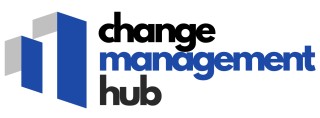
The Role of HR Communication in Change Management
The Intersection of Internal Communications and Change
At the heart of effective change management lies a well-orchestrated communication strategy. The human resources (HR) department is pivotal in crafting and delivering the messages that shape an organization's journey through transformation. HR teams are not mere transmitters of information but the architects who ensure messages resonate across the company.
Effective internal communications enable employees to grasp the purpose and direction of change. It aids in aligning individual workplace goals with broader organizational objectives. A comprehensive communication plan fosters a culture where people feel informed and valued, amplifying employee engagement. In such workplace environments, employees feel equipped and motivated to contribute to the change process actively.
To achieve this, HR must leverage various communication channels—from traditional emails to modern social media platforms. These channels should be strategically chosen and employed to reach diverse teams effectively. A robust communications strategy values clarity, consistency, and real-time feedback loops, ensuring the messages are not only heard but also understood.
Moreover, understanding company culture plays a crucial role in shaping the tone and method of internal communication. HR's role extends beyond merely delivering the news; it involves nurturing an environment where communication efforts encourage dialogue and support. Crafting an effective crisis communication plan is an integral component of being prepared for unforeseen challenges that may disrupt normal operations or workplace harmony.
Key Elements of Successful HR Communication
Critical Components of HR Communication
Effective communication within human resources is vital for navigating the complexities of change management in any organization. Establishing a robust communication strategy ensures that employees are not just informed but actively engaged in the transformation process. Here are the key components that make HR communication successful in fostering change:
- Clear Messages: It is essential that communications are clear and concise. HR should craft messages that align with the company’s goals and culture, ensuring that all team members understand the objectives of the change.
- Open Channels: Implement diverse communication channels, such as face-to-face meetings, internal newsletters, and digital platforms, allowing employees to receive updates in various formats and participate in dialogue.
- Engagement Opportunities: Promote employee engagement by inviting feedback and encouraging questions. This proactive approach not only builds trust but also integrates employees into the change initiative, making them feel valued.
- Consistent Internal Communications: Consistency is key in internal communication efforts. Regular updates maintain momentum and reassure employees that there is a cohesive plan driving the change.
- Supportive Resources: Providing adequate resources and support for employees is crucial. This may include training, guidance, and access to information that helps them understand and adapt to new practices.
By focusing on these components, human resources can enhance internal communication and create an environment where employees feel more connected and informed. Discover tips on how to enhance your leadership skills to further support a successful change management journey within your organization.
Strategies for Improving HR Communication
Revamping Communication Approaches for Enhanced Employee Engagement
For any organization aiming to improve communication among its employees, adopting effective strategies is crucial. This not only involves revising traditional methods but also incorporating new techniques to foster a culture of transparency and openness. By doing so, companies can ensure that their employees feel more connected and engaged at work.
Utilizing Multiple Communication Channels
An organization's communication strategy should leverage a variety of communication channels to disseminate messages effectively. While emails and newsletters remain staple methods, integrating social media and real-time messaging platforms can provide immediate and more relatable ways to reach teams. By diversifying the types communication, employees can choose the channel that best fits their work style and preferences, improving the communication overall.
Crafting a Comprehensive Communication Plan
Having a clear communication plan is essential for ensuring that all internal communications align with company goals. Human resources should work closely with leadership to develop messages that resonate with the workplace culture. This plan should include dedicated resources communication, such as dedicated time and tools, to facilitate ongoing engagement and enable effective communication throughout the organization.
Developing Communication Skills
Improvising employee experience goes beyond sending messages; it requires honing communication skills across all levels. Providing training and workshops where employees can practice and develop these skills can lead to a more cohesive and understanding environment. Encouraging feedback mechanisms further aligns the communication efforts, allowing human resources to fine-tune messages tailored to their teams' unique needs.
Ensuring Alignment with Company Culture
The way a company communicates internally should mirror its core values and culture. By maintaining this alignment, human resources can ensure messages are not only heard but also felt, contributing to a sense of belonging among employees. An alignment ensures that any implemented communications strategy supports broader organizational goals and keeps employee engagement at the forefront.
Overcoming Common HR Communication Challenges
Addressing Barriers to Effective HR Communication
In the dynamic landscape of organizational shifts, internal communication can face a variety of challenges that, if left unaddressed, may hinder the success of change management efforts. Overcoming these barriers is crucial to achieving seamless communication that fosters employee engagement and supports company goals. One common issue is the absence of a clear communication strategy. Without a comprehensive communication plan, messages may lack consistency and fail to reach employees effectively. Developing a well-defined strategy can mitigate this issue by outlining key communication goals and determining the most effective communication channels to reach your workforce, such as social media or internal communication platforms. Cultural differences within an organization may also pose significant challenges. Given the diverse backgrounds of employees, assumptions about communication preferences can lead to misunderstandings. By cultivating a culture of openness and inclusivity, HR can ensure that communication efforts are tailored to suit varied employee experiences and preferences. This involves recognizing the unique attributes of your company culture and finding ways to bridge any gaps in understanding. Resource constraints often impede the flow of effective communication. When human resources teams lack the necessary resources communication tools, they may struggle to disseminate information in real time, leading to delays and disconnection. Investing in advanced communication tools, such as project management software or simplified digital communication channels, can greatly enhance the efficiency of your organization’s communication efforts. Finally, resistance to change can be a formidable obstacle. Employees may feel uneasy about transformations within the workplace, leading to reluctance in embracing new communication methods. It’s crucial to engage employees early in the change process. Through transparent messaging and the involvement of key team members, you can foster a sense of ownership and commitment among staff, easing the transition to new communication types and strategies. By recognizing and proactively addressing these common barriers, companies can improve communication within their teams, leading to a more effective implementation of change management initiatives.The Impact of Technology on HR Communication
Embracing Technological Advances in HR Communication
The advent of technology has revolutionized the way communication unfolds within organizations. By leveraging digital tools and platforms, companies are able to enhance their communication strategy, making it more dynamic and effective. Understanding the impact of technology on communication is crucial for human resources teams aiming to improve communication.- Digital Communication Channels: The use of digital channels such as internal portals, email newsletters, and mobile applications facilitates real-time communication. These platforms allow for immediate dissemination of information, ensuring that employees are consistently informed and engaged with the company culture.
- Social Media Integration: Incorporating social media into the internal communications strategy can improve employee engagement efforts. Social media platforms can be used to share updates, celebrate achievements, and promote a sense of community among teams.
- Enhanced Communication Tools: Tools like collaborative platforms and digital workspaces, as well as video conferencing software, boost interaction and facilitate communication across different workplace settings. These resources support various types of communication, from team meetings to one-on-one check-ins, fostering a more connected and communicative workplace environment.
Case Studies: HR Communication in Action
Real-World Examples of Effective HR Communication
Understanding the theory behind HR communication in change management is essential, but seeing how it plays out in real-world scenarios can be even more enlightening. Here, we explore a few case studies that highlight successful communication strategies in action.
Case Study 1: A Tech Company Revamping Its Internal Communications
A leading tech company faced challenges with employee engagement during a major organizational change. The human resources team decided to overhaul their internal communication channels. They implemented a multi-channel communication strategy, utilizing social media, internal newsletters, and real-time messaging tools. This approach ensured that employees felt informed and engaged throughout the transition. The result was a smoother change process and improved employee experience.
Case Study 2: Manufacturing Firm Enhancing Employee Engagement
In a manufacturing firm, the introduction of new technology required a shift in company culture. The HR department focused on improving communication skills among team leaders and managers. They developed a comprehensive communication plan that included regular workshops and feedback sessions. By prioritizing effective communication, the company successfully aligned its workforce with the new goals, enhancing overall employee engagement.
Case Study 3: Non-Profit Organization Utilizing Resources for Effective Communication
A non-profit organization aimed to improve its internal communications to better align with its mission. The human resources team leveraged various communication tools and resources to create a more cohesive communication strategy. By focusing on clear messaging and consistent communication efforts, the organization was able to foster a more engaged and motivated workplace culture.
These case studies illustrate the importance of a well-thought-out communication strategy in achieving successful change management. By utilizing diverse communication channels and focusing on employee engagement, organizations can navigate change more effectively.













